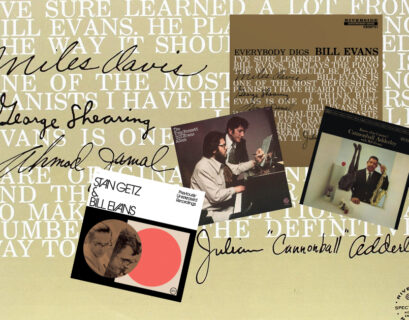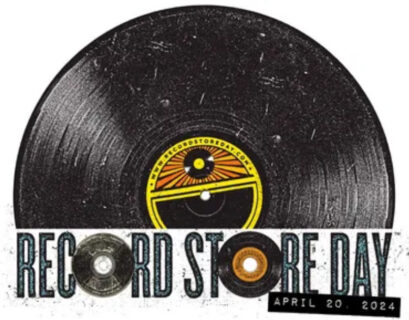It’s the time of year for saving money!
This introduction is written for a multitude of music fans who may be perplexed by the seemingly endless wave of archival live recordings been issued by the estates of legacy artists. Some of you may look at this as a quick cash grab — I’ve been reading some grumbling about this increasingly each year before Record Store Day — but there’s really a greater purpose to it and there are multiple reasons for it happening now.
First and foremost is the notion that certain types of artists were such dynamic performers that every time they took to the stage their music evolved. That is the underlying appeal of a group like The Grateful Dead who were known for never quite doing the exact same set twice pretty much and which is why there are thousands and thousands (and thousands!) of fans who collect every minute of the group’s collective breath that they can get their hands on.
If you are a deep fan and want to really understand what your favorite artists are about, many times you absolutely need to hear the live documents of their performances. In the past, the record labels didn’t always like to release these types of recordings fearing they might take away from sales of studio releases. In other instances, the live recordings nearly defined the artists careers (from Allman Brothers at Fillmore East and Grateful Dead’s Europe ’72 to Frampton Comes Alive and Coltrane “Live” at the Village Vanguard).
And it’s why, at least in part, many of these bands and artists have started their own archival release series. This way they can give the fans what they want in best possible fidelity and they can ensure that not only they get paid but also all their staff and publishers and other players in the food chain (if you will) which bring the music to you, the listener. It is ultimately a “win win” scenario.
Many other artists have followed The Grateful Dead’s lead including King Crimson, Bruce Springsteen, Pearl Jam, Neil Young and The Who and many of the jam bands like Phish, Umphrey’s McGhee, Widespread Panic and such (go visit nugs.net if you are curious how vast this universe is). Heck, even the Frank Zappa Trust has “opened the kimono” (if you will) over the past 10-15 years to reveal a remarkable series of outstanding archival recordings which bootleg-collecting hardcore fans could only dream about…
In the jazz universe there is a vast underground of collectors of live recordings coinciding (not surprisingly) with the advent of portable recording gear. These date back to no less than Duke Ellington’s peak years in the 1940s as well as BeBop-era revolutionaries like Charlie Parker, Dizzy Gillespie, Thelonious Monk. Dig down a little bit and you’ll find live recordings from everyone Charles Mingus, Miles Davis, John Coltrane and Eric Dolphy to Pat Metheny, John McLaughlin and many others.
And of course there is piano legend Bill Evans…
The Bill Evans Estate and the good folks at Resonance Records have been gracing us with many gems from Evans’ archives over the past several years which have been in quite stellar both in terms of performances and fidelity. Two new ones are coming out on Record Store Day which are a wonderful addition to that series.
Both albums were recorded professionally in Buenos Aires and are lovely and somewhat different listening experiences: Morning Glory (from 1973) and Inner Spirit (from 1979). This is the first time these recordings are seeing a proper official release, made from the best possible sources and making sure that all parties involved in its creation receive the credit due them.
Original tapes were used and the mastering was done sympathetically to the music so they sound great.
The 180-gram vinyl pressings on this pair of two-LP sets are thick, dark, quiet and well centered, as we have come to expect from Resonance Records (mastered by Bernie Grunman, pressed at RTI). The full-color, gatefold package design is very thoughtfully laid out with all sorts of interesting information and photos from the period as well as LP-sized booklets offering fresh essays and background information on how the recordings were made.
In short, they give you pretty much everything you would expect and hope for in an archival release of this nature.
As to which I like better, that is a hard question. Both performances are lovely and the audiences are super appreciative and attentive. For some reason I’m leaning toward the 1973 Morning Glory show with Eddie Gomez on bass and Marty Morell on drums as it feels a tad more introspective performance wise (something I like).
I found the version of “Emily” here quite haunting and even a bit humorous as Evans seems to emphasize a certain bit of melody which (to my ear) references The Beatles’ “Here, There & Everywhere” (it is just a phrase which uses the same chord and note structure, but the way he plays it here sounds like a playful intentional reference as compared to other versions of the song I’ve heard). The version of “What Are You Doing The Rest Of Your Life” actually made me pause to consider the question Evans was asking us with this performance.
But the 1979 show — which finds Evans backed by his last band with Marc Johnson on bass and Joe Labarbera on drums — has many gems to offer such as a take on Paul Simon’s “I’d Do It For Your Love” (from the 1975 double-Grammy-winning smash hit, Still Crazy After All These Years). Evans turns in a poignant “Letter To Evan,” written for his son. At times, the 1979 performance feels a little edgier but one can not deny the beauty as heard on “I Loves You, Porgy.”
There is a great deal of fascinating background in the accompanying booklets included with each set, painting a dramatic portrait of the mindset of the artist at the times these recordings were made. They explore not only the personal struggles he was facing but also the socio-political environments they confronted in Buenos Aires, which no doubt impacted the performances.
Of course the big question for you, Dear Reader, is whether you need to buy Inner Spirit: The 1979 Concert At The Teatro General San Martin and Morning Glory: The 1973 Concert At The Teatro Gran Rex on vinyl for Record Store Day or whether you’ll be satisfied with a CD?
If you are a Bill Evans fan and you’re a vinyl collector you’ll probably want both. Both recordings underscore the joys Evans left us through his music, something we all should be thankful for. Bill Evans always put his heart and soul on the line through his music and that comes through these recordings loud and clear.




















